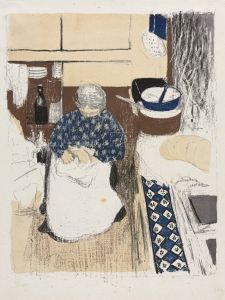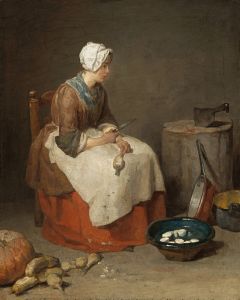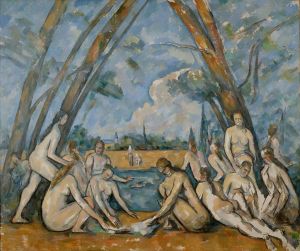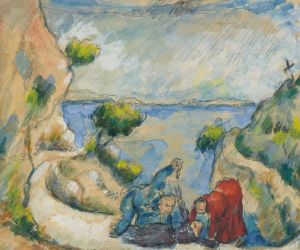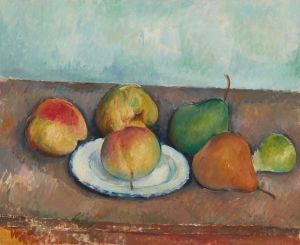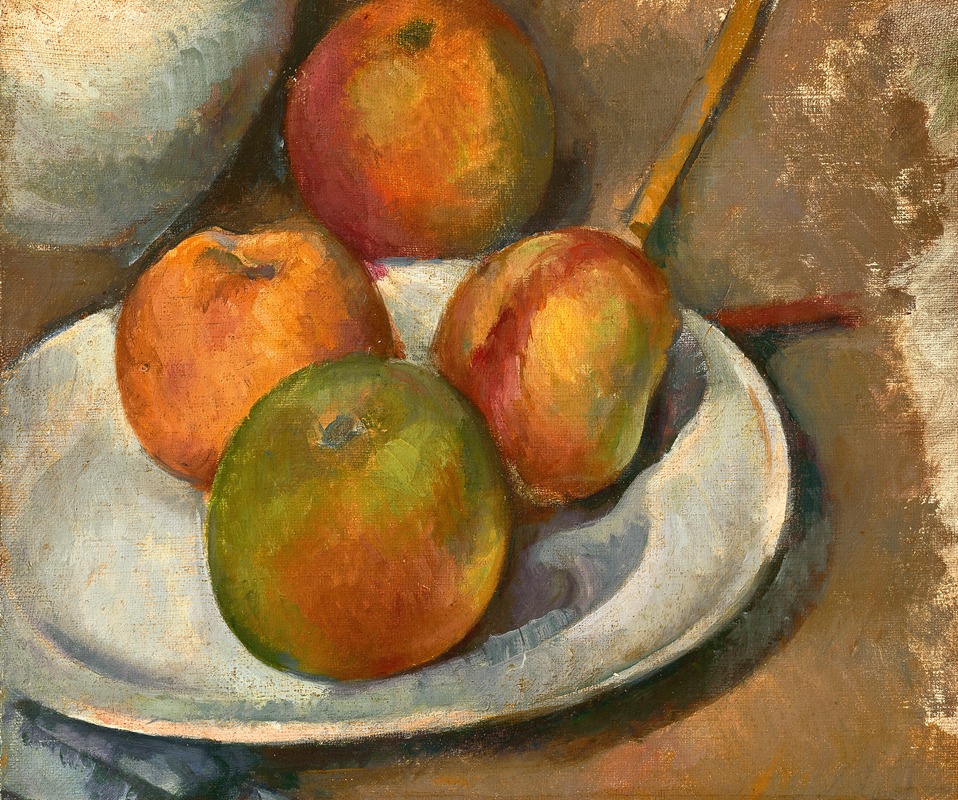
Quatre pommes et un couteau
A hand-painted replica of Paul Cézanne’s masterpiece Quatre pommes et un couteau, meticulously crafted by professional artists to capture the true essence of the original. Each piece is created with museum-quality canvas and rare mineral pigments, carefully painted by experienced artists with delicate brushstrokes and rich, layered colors to perfectly recreate the texture of the original artwork. Unlike machine-printed reproductions, this hand-painted version brings the painting to life, infused with the artist’s emotions and skill in every stroke. Whether for personal collection or home decoration, it instantly elevates the artistic atmosphere of any space.
Paul Cézanne's "Quatre pommes et un couteau" is a still life painting that exemplifies the artist's innovative approach to form and composition, which significantly influenced the development of modern art. Cézanne, a French Post-Impressionist painter, is renowned for his unique method of building form with color and his analytical approach to nature, which laid the groundwork for the transition from 19th-century artistic concepts to a radically different world of art in the 20th century.
"Quatre pommes et un couteau," translated as "Four Apples and a Knife," is a quintessential example of Cézanne's still life work, a genre he explored extensively throughout his career. The painting features four apples and a knife, arranged on a surface, capturing the simplicity and complexity of everyday objects. Cézanne's still lifes are celebrated for their exploration of perspective and form, and this work is no exception.
Cézanne's approach to still life was revolutionary. Unlike his predecessors, who often aimed for realistic depictions, Cézanne was more interested in the underlying structure of the objects he painted. In "Quatre pommes et un couteau," he employs a technique that involves the use of color to define form, rather than relying solely on line and shading. This method allows the objects to appear both solid and fluid, capturing the essence of their physical presence while also suggesting their impermanence.
The composition of the painting is carefully balanced, with the apples and knife arranged in a way that draws the viewer's eye across the canvas. Cézanne's use of color is particularly noteworthy; he employs a palette that includes rich reds, greens, and yellows for the apples, contrasted with the muted tones of the background. This contrast not only highlights the apples but also creates a sense of depth and volume.
Cézanne's treatment of space in "Quatre pommes et un couteau" is another significant aspect of the painting. He often played with perspective, challenging traditional notions of how space should be represented in art. In this work, the table on which the apples and knife rest appears tilted, a technique Cézanne used to create a dynamic tension within the composition. This manipulation of perspective invites viewers to engage with the painting in a more active way, encouraging them to consider the relationship between the objects and the space they occupy.
"Quatre pommes et un couteau" reflects Cézanne's broader artistic goals, which were to capture the complexity of visual perception and to convey the artist's personal experience of the world. His still lifes, including this painting, are not merely representations of objects but are explorations of form, color, and space that challenge viewers to see beyond the surface.
Cézanne's influence on subsequent generations of artists cannot be overstated. His innovative techniques and ideas paved the way for movements such as Cubism and Fauvism, and artists like Pablo Picasso and Henri Matisse have cited Cézanne as a critical influence on their work. "Quatre pommes et un couteau," with its masterful composition and groundbreaking approach to form and color, stands as a testament to Cézanne's enduring legacy in the world of art.





